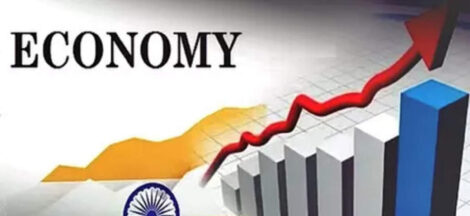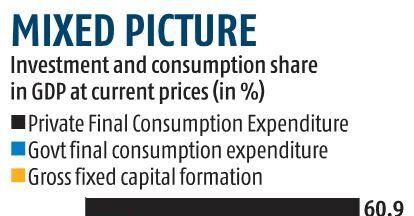MUMBAI: India’s household financial savings rebounded to 5.1 per cent of gross national disposable income (GNDI) in 2023–24, according to the Reserve Bank of India’s (RBI’s) annual report for 2024-25, after falling to a multi-year low the previous year. The rebound comes amid a favourable economic outlook and moderating inflation. The report exuded confidence that retail inflation will align with the RBI’s 4 per cent target over a 12-month horizon.
“The benign inflation outlook and moderate growth warrant monetary policy to be growth-supportive while remaining watchful about the rapidly evolving global macroeconomic conditions,” it said.
Gross domestic savings, as a share of GNDI, held steady at 30.3 per cent in 2023–24, largely due to a decline in the general government’s “dissaving”. At the same time, household gross financial savings rose to 11.2 per cent of GNDI, up from 10.7 per cent in 2022–23; liabilities increased to 6.1 per cent. As a result, net household financial savings improved to 5.1 per cent from 4.9 per cent.
“The savings-investment gap narrowed during 2023–24,” said the report, attributing the shift to a reduced drawdown by the general government, subdued investment demand from households and non-financial corporations, and a moderation in savings by financial corporations.
Economists expect further improvement in net financial savings in 2024-25. Soumya Kanti Ghosh, group chief economic adviser at State Bank of India, said net financial savings of the household sector, the key funding source for both general government sector and non-financial corporations, could reach ₹22 trillion, or 6.5 per cent of GNDI, in 2024–25. It was 5.1 per cent in the year under review versus 4.9 per cent in 2022–23.
“This growing capital pool remains crucial for funding government and corporate deficits and supporting macroeconomic stability,” he said.
While the economic outlook remains positive, the RBI cautioned against evolving global macroeconomic conditions. In 2025-26, the annual report said, the markets will closely track the implications of American tariff policies and reciprocal measures by others.
“The Indian economy is poised to sustain its position as the fastest growing major economy during 2025-26, supported by a pickup in private consumption, healthy balance sheets of banks and corporations, easing financial conditions, and the government’s continued thrust on capital expenditure,” the report said.
The RBI projects headline inflation at 4 per cent and GDP growth at 6.5 per cent in 2025-26. The monetary policy committee has lowered the policy repo rate by a cumulative 50 basis points since February and adopted an accommodative stance in April, underscoring its focus on growth.
Nevertheless, downside risks remain. The report flagged threats to growth from global trade disruptions due to protectionist measures, protracted geopolitical tensions, and financial market volatility. It also pointed to upside risks to inflation from the same sources.
“Going forward, easing supply chain pressures, softening global commodity prices, and expected higher agricultural production supported by above-normal southwest monsoon and elevated reservoir levels augur well for the inflation outlook in 2025-26,” stated the report.
On the external sector, the report said, a robust outlook for India’s services trade balance and inward remittance receipts is expected to support the current account deficit (CAD) to remain well within the sustainable limit during 2025-26. Moreover, the inclusion of Indian sovereign bonds in global bond indices and raising the FDI cap in the insurance sector to 100 per cent from 74 per cent earlier, as announced in the Union Budget 2025-26, should bolster foreign investment flows, it said.
India’s banking sector continues to display resilience, the report noted, but global uncertainty underscores the importance of proactive risk management. “Considering the dynamic nature of the interest rate risk, banks need to address both trading and banking book risks, especially in light of moderation in NIM (net interest margin),” it said.
The RBI report also observed that despite moderation, non-banking financial companies remain significantly dependent on banks for funding, underscoring the need for greater diversification of their funding sources. “Scale-based regulatory framework is expected to further improve governance and risk management,” it added.
Source: Business Standard



